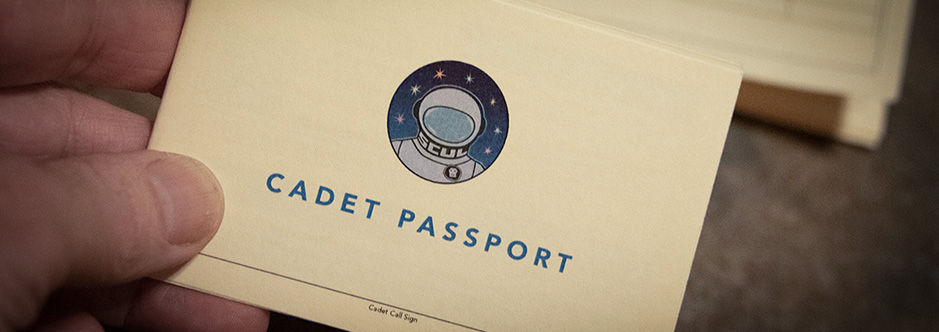
How to Become a SCUL pilot
Our systems have been in a state of continuous evolution since SCUL's beginning. Read this page if you are:- interested in joining SCUL
- in the midst of cadethood
- a host brushing up on current cadet training protocol
- curious about training
It takes a fair amount of training to become a SCUL starpilot: We stick together and we fly with class. Read on to know whether or not you are ready to be trained to embark on glorious adventures with us.
You: The Cadet
All pilots start out as cadets. Many SCUL pilots have joined SCUL not knowing any of us, and we think that's brave. And also cool.
Your SCUL Host
Your host is a cross between your drill sergeant, your homeroom teacher, and your best bud. Your host oversees your overall training process. Often they accompany you as your wingmate for your first mission.
Finding a Host
You may know someone who's already in SCUL that you can reach out to, but if you don't, send mail to scul.ambassador@gmail.com to get the introductions started. Please tell us a bit about yourself and what draws you to adventures such as these.
Once your host has been found they will set you up with a preliminary pilot page, and will let you know about upcoming missions. Once you and your host have chosen your first mission, you will receive fort airspace protocol and guidance systems for you and your craft.
With the obvious exception of the first SCUL pilot, everyone who has joined SCUL had a host. For a while, SCUL had a javascript program that generated a 'family tree': an enormous graphic that illustrated who-brought-who in. Pilots enjoyed looking at their 'host heritage', as well as how many great great grand-cadets they had. SCUL has a slightly out of date, large format print-out at the fort. Ask to see it if you are interested.
Wingmates
A wingmate is the SCUL pilot who is responsible for cadet's training during SCUL activities. Any SCUL pilot can wingmate a cadet.
The Cadet Passport
The Cadet Passport is a physical workbook for you to complete over the course of several missions. Unless specified, the passport does not need to be filled out in any particular order, but it must be 100% completed before achieving the rank of Pilot.
Without the passport we can't check on your progress, and training becomes difficult. Please do not leave your passport at home, it is vital.
Cadet Passport Contents
Page 1: Pilot Profile Page 1a: Tour of the Fort Page 2a: Your Pilot Summary Page 2b: Preflight Page 3: Draw a Picture of Yourself Page 4: Taskforce Page 5: Mission Records Page 6: Maintenance Repair and Construction Page 7: Pilothood Checklist Page 8: Colors Page 9: Cadet Trials Page 10: Approval for Knighting Page 11: The Knighting Ceremony Page 12: The Oath of SCUL Page 13: Final Steps Back Cover: Stamp of PilothoodPilot Profile
Your Call Sign
This is your new superhero identity: what everyone will know you as.Choosing a new name for yourself can be daunting, but it can also be liberating. Many pilots already have handles that aren't their 'civilian name' anyway. Check out the list of pilots to get some inspiration - and to see what call signs have already been taken.
Not sure of your name yet?
Choosing a new identity should not be taken lightly. It's what everyone in SCUL will call you, and they will avoid using (and even learning) your civilian name. If you need time to decide, we can affectionately call you 'maggot', or '[YOUR HOST NAME]'s maggot, if there are more than one of around at the same time. It's okay to change your call sign while you are bring trained, but once you become a pilot, it's permanent.
Tour of the Fort
Know your star fortress and it's capabilities. The host should point out the following aspect of the fort:
- Personal pilot shelf and depot
- Totem Pole
- Ship Storage and it's system
- All tool boards
- All toolboxes
- Starship scrapyard
- Plasma regeneration units
- Fluids
- Mission Pinning station
- Droid station
- Electronics bench
- Tire Storage
- Doorbell
Basic Pilot Information Entered
Make sure the following information has been entered on your pilot page:
- Your call sign
- Your email This is the email address that will get the SCUL bulletins. More contact information can be added in the contacts tab.
- Preferred Pronouns
- Your host
- Enlistment Date
- Primary Division SCUL Prime Somerville (written as Metro Alpha Division), or Starchaser New Bedford
- Receive Bulletins Weekly 'bat-signals' to temp you to come and have fun, and to let you know important SCUL news.
The rest can be filled out as you progress through your training.
Emergency Contact Entered
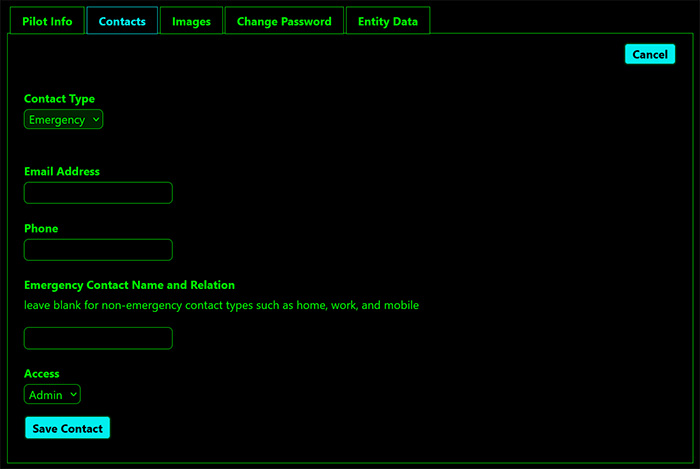
From your edit pilot page, click on the 'contacts' tab and then the 'add new contact' button. Fill out the form so we can get in touch with loved ones in case of an emergency.
First Pilot Photo Added

Cadets can't become pilots until they have at least one image of themselves on their pilot page. However, if you are not into having your image on the SCUL site for whatever reason, upload an image that makes it hard to identify you.
While most pilot profile images are in the context of SCUL, feel free to image edit yourself onto a unicorn. You may be tagged in photos of you for the missions you attend, but nothing will be publicly posted to your pilot page without your approval. Visit your pilot page often to see what new images are available to you. You can also upload images on your own. Keep in mind that images should be no more than 700 pixels wide.
Uploading an Image
To upload an image to your pilot page:- Log into scul.org using the link in the upper-right hand corner of any web page on the public site .
- Navigate to your pilot page and click the edit button in the upper-right hand corner. Note that your name in the upper right hand corner of the page will take you to the edit profile page.
- Click the 'edit' button and then the 'image' tab.
- Click the 'Add image' to go to the image gallery. Click the 'Upload Image' button to upload an image. Follow the instructions.
Pilot Summary
A SCUL pilot summary can start as placeholder text, but should be an interesting read before knighthood. Sometimes it's a long description, but it certainly doesn't have to be, as long as it's thoughtful.
Preflight
All SCUL pilots are trained to preflight their ship so that it is space-worthy.While SCUL pilots are not required to fix all the mechanical problems they encounter, they are required to be able to recognize when something needs fixing, especially it's a safety concern. Mechanical or structural issues that are not fixable right away should be damage tagged and logged into HAL, SCUL's private wiki.
Visit the Preflight Check page for a basic explanation.
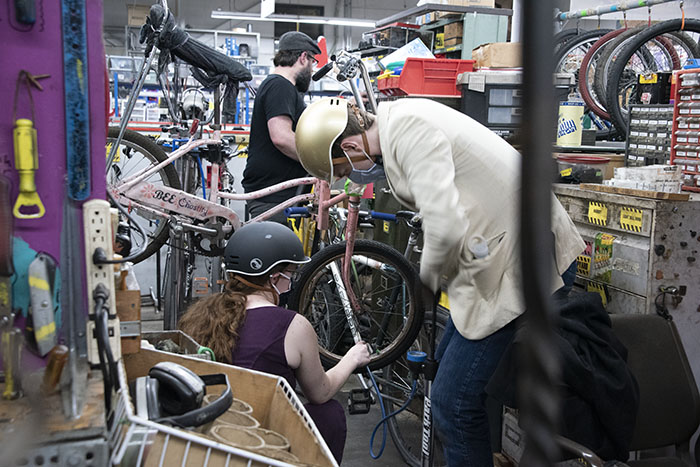
Stage One Preflight - Watch Your Host
Your host goes over the basics, pay attention as you will be doing this each time you fly with SCUL
Stage Two Preflight - Host Watches You
Your host watches you to make sure things are done properly. If things get complicated, the host can take over and help.
Stage Three Preflight - Solo with Host Available
Your host is within earshot to be available upon request.
Draw a Picture of Yourself
This is an old tradition and is meant to be fun.
Photo of your masterpiece sent to SkunkSkunk will resize the photo and upload it to your pilot page, but won't make it visible. You can make it visible to the public if you are proud of your work.
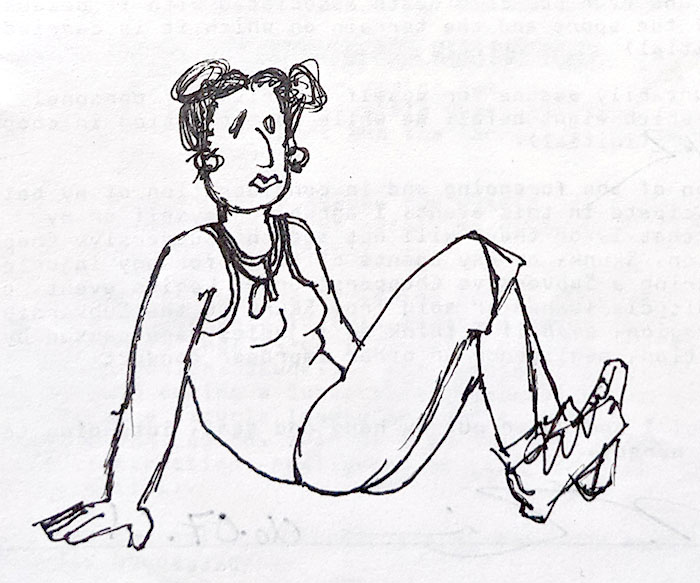
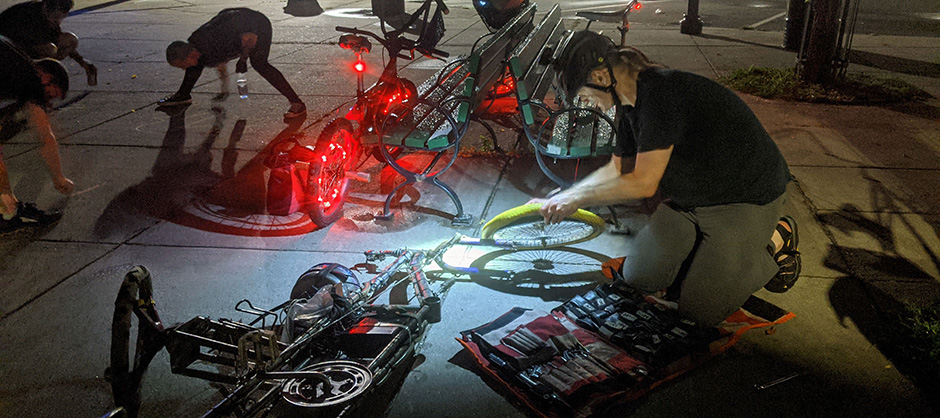
Taskforce
Many pilots make light work. In order to accept a taskforce job, you must read the taskforce objectives and description. A stardate at the top of the document will tell you when the last time the taskforce job page was updated, to make it easy to know if a review is necessary. We use this method so we don't have to have a lot of group meetings to talk about logistical changes to our procedures. Jobs are updated by the people who do them.
At least five different jobs must be successfully completed by a cadet. Logged in cadets and pilots will have access to taskforce job objectives and descriptions.
Mission Records
Cadets fly three missions before earning their wings. Your host and wingmate are a source of vital information about flight tactics, including launchpad protocol, in-flight tactics, shore leave, mechanicals and the like, and mission debriefing on the landing pad.
First Mission: Shadow Your Host/Wimgmate
Pair up with your host or assigned wingmate, and hang out and help out, sort of like a knight's squire. Ask questions. Try to perform accurate maneuvers.
Be next to your host at the lauchpad as well as the landing pad. The host will tell you what to do and answer any questions you have.
Second Mission: Watched By Wingmate
You are free to maneuver around the fleet more freely. Your wingmate keeps an eye on you and provides feedback.
Third Mission: ‘Solo’ with Wingmate available
By your third mission you should be able to fly with complete freedom within the confines of SCUL flight protocol.
MRC: Maintenance, Repair, and Construction

MRC can happen almost any time you and your host are ready. Your host or a SCUL pilot who can support you must be present. See the MRC Battleplan on HAL for guidance.
If you only fly missions with SCUL, you're missing out on half the fun. Without MRC time, the ships don't get maintained or repaired, the fort slips into disarray, and new projects never progress.
Cadets are required to log in at least two full hours of MRC.
Pilothood Checklist
Complete all of these benchmarks before proceeding further in your Passport
Be on time for three official missions.
Being on time should not be a stressful event, if you give yourself the time you need. You must be physically present at the fort, checked in with the Gate Attendant, with a fully-preflighted ship. Most people give themselves at least a half and hour of fort time to make this happen, more if there's a bag for them to inventory, make a minor repair on the ship they are flying, mission pinning, or just hanging out with other pilots.
Master signing up for missions and jobs.
Work with your host to master signing up for missions and mission tasks.
Master all SCUL tactical maneuvers.
This includes all flight tactics, launchpad protocol, shore leave and landing pad protocol.
Master not using civi-names in the presence of SCUL.
SCUL tradition is that each time you 'drop a civi name', you drop and give a push-up, cumulatively throughout your SCUL career. In other words, the fifth time you slip, you do five push-ups.
Most of us usually wind up knowing each other's names through other means, it's not a huge deal
Succeed in practicing silent running.
Whispers only during launchpad shuttle, returning to base, and mechanicals when the music is off. Whispering means not using your vocal chords, only your breath. This may seem extreme, but it's the only threshold we can use without using special equipment, and it's not hard to do. This is important and it's taken very seriously.
Master entering your taskforce effectiveness and stats.
If something isn't clear, please talk to Skunk so he can help - this way he can improve the system for future cadets as well.
Read the vital documents on section of HAL.
HAL is our private wiki, which all cadets and pilots have access to. The vital documents are listed on the front page of HAL.
Read some things on the BBS
The SCUL bulletin board is a vital source of timely information: Check it out, and by all means, feel free to post.
Colors

Once Skunk had an embroidery machine, but it was temperamental and could only do the whole logo in four separate runs. Sometimes the registration would be quite off, and sometimes the thread would bind up, ruining the piece. The whole process took hours and was pretty frustrating. Now we outsource it to a really great guy named Ken who works out of his basement in Watertown. Ken's work is superb, and he likes SCUL.
Cadet Trials
Your trial must be approved by Skunk, mostly to keep folks from taking on something too ambitious.
Examples of Past Trials
- Write and Perform a SCUL Drinking Song: Turbopickle
- Paint a mural on fort equipment: Kongzilla
- Design and make a SCUL card game: Sunshine
- Bake some SCUL-themed cookies to share: (a few pilots)
Approval for Knighting
Once you have completed everything in the cadet passport up to this point, your Host signs it swearing that you have earned your wings and are fully trained and prepared to become a full-fledged SCUL Starpilot.Skunk signs off on it too
The Knighting Ceremony
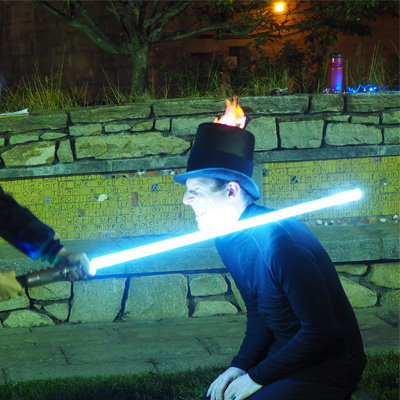
Preparation
You will be knighted in space during a mission. Help your host prepare the following at the ceremony:- Your colors They may be temporary, home made, and improvised.
- Your insignia badge
- Your dog tag
- A fully charged knightsaber If no knightsaber is handy, your host must improvise.
The Ceremony
The mission leader calls 'circle ranks' and gets all personnel to bear witness to a sacred event, then introduces the host or knighting pilot if the host is unavailable, who says the following:
The Oath of SCUL
Cadet! Please come forward and kneel.
Do you recognize that space travel has risks of serious personal injury and even possible death associated with it because of the nature of the occupation and the environment in which it is carried out?
Do you hereby voluntarily assume for yourself all risks of personal injury or death which might befall you while participating in space travel, including the possibility of being sucked out an airlock?
In recognition of the foregoing and in consideration of your enlistment, Do you solemnly swear to pledge yourself to adhere to SCUL protocol, for the opportunity to seek glorious fortune with the camaraderie of your fellow pilots?
Do you solemnly swear to 'bust the funk'?
Then by the power vested in me by SCUL, I hereby knight you, [callsign], Pilot of SCUL!
Final Steps
- Online security clearance updated to Pilot
- 'Pilothood Date' and 'Knighted By' added to pilot page
- Insignia updated with current rank online and on tags
- Any special awards are up to date online and on tags
Once all check-boxes are filled, your passport is stamped, granting you full starpilothood.
The Stamp of Pilothood
Once your passport has been stamped, you are a full-fledged SCUL pilot. You will get points for the mission you were knighted on and all official missions after that. Be sure to log in your bonuses for MRC and other SCUL related tasks too.
SCUL pilots may also host one cadet at a time.
If you have completed your cadet training, congratulations are in order. Huzzah!
Last updated stardate 22-09-21